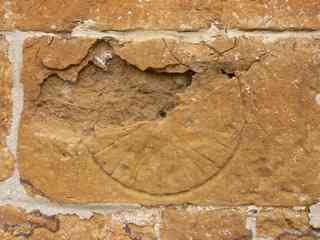Oxhill News
www.oxhill.com / www.oxhill.org.uk
South Warwickshire, England.
The Oxhill News
October 2011
Contents
Nature Notes
“Is it a foolish fancy or do those tufted ashes on the hilltop resemble those of Hobbema’s famed avenue of Middleharnis? There is a gate to open; the jingle of the reaping machine, the grasshopper’s chirp hardly break the stillness, and towards the green ridge of Edge Hill the road runs white and curving through the fields past a hayrick in the valley into an enchanted country. In the green and pleasant midlands one can ask for no fairer sight – the village of Oxhill in Warwickshire wild pear country.
Mary Dormer Harris Unknown Warwickshire, 1924
Codge-bell, cody bell, coffin cutter, forkin robin, gowlick, twitch-bell, arrywiggle – just some of the colloquial names for the earwig. Why do I mention the earwig? Because this year we seem to be infested with the little things, not only in the garden, but in the house as well – in saucepans, in the fruit bowl, in every bag of vegetables, in a jar of unopened pickle! Everyone must know this omnivorous insect, easily recognised by the tweezer-like pincers or cerci at the rear; if they are curved then this is the male, if straight, it’s the female. Surprisingly, earwigs can fly, but seldom do, mainly due to the fact that they have difficulty unfolding their wings which are pleated, concertina-fashion, about 40 times, and they are also very thin – their latin name Dermaptera literally means “skin wings”. It is said that when the wings are unfolded they somewhat resemble a human ear. There is no known evidence that the earwig does or ever has entered an ear. There was once a somewhat more unexpected anatomical association in the north of England, where the earwig was known as a ‘twich-ballock’ “…. As if you would call it Scrotomordium … for wherever it finds a pleated skin it will cause very great pain, either by biting with the mouth or by winding about it with its forked tail” (Muffet, 1658). Many years ago in Oxhill an old gardener named George from Tysoe was noted never to remove his bicycle clips! – we now know why. The earwig is one of the few insects outside the colonial species that exhibits parental care; the female tends her eggs in the soil throughout the winter.
Thank you everyone who took part in the Great Butterfly Count. Apparently 15,870 counts were sent in through the country and the top ten butterflies seen were pretty much the same throughout the country, starting with the most seen: Small white, Large white, Gatekeeper, Meadow brown, Common blue, Peacock, Green-veined white, Red Admiral, Small tortoiseshell, Ringlet. Here in Oxhill the Comma was certainly seen more than the Common blue. The Gatekeeper for several years had declined, as had the Small tortoiseshell, but both have bounced back this year. Throughout the country and here in Oxhill, Painted Lady sightings were almost non-existent, but a rarer butterfly for this parish, the Marbled White, was seen in several locations.
Recently while members of OWLS were carrying out a wild flower count in the churchyard, two of us were doing a lichen count, mainly on tombstones, but also on parts of the church walls. Our attention was drawn to a sundial scribed into the south-facing wall. These were in fact known as tide dials and mass or scratch dials. I urge you to go and look at this because unfortunately water has got behind it and the stone face is about to ‘pop’ and it will be lost for ever. The Anglo-Saxon word “tyd” from which “tide” is derives, means seasons, but in a broad sense. The Saxons divided their sundials into ‘tides’ not hours, which comprised eight tides to cover the day, and sometimes there just four segments, each three hours long. In the centre is a hole where the gnomon, a wooden peg, was inserted to cast the shadow. They were usually situated by the priest’s door into the chancel (as ours is), and the priest would then know when to ring the bell for mass and vespers. This bell would also inform workers in the surrounding area what time of day it was. I have taken some time to check the south wall and there is clear evidence of five of these scratch dials; there is quite an elaborate one on the buttress. It is interesting to note these five dials are at different heights and one theory is that the stone masons would have scribed them in as soon as the wall gained some height, so they in turn had a timed indication of their working day. Apparently these dials ceased to be used some time after the Norman conquest.

26 October – Gather sloes for a sure remedy against diarrhoea; or to make sloe gin, wine or jelly. Sloes for keeping are best taken not quite ripe, and stoned still on the branch, but sloes for wine or jelly (wherein some mix them with apples to take away their sharpness) should be left until after they have weathered a sharp frost or two. Gervaise Markham The English Housewife, 1683
Grenville Moore
This site is maintained by villagers of Oxhill for the benefit of the community and those interested in the history, news and activities that make the village such a pleasant place to live.
Send mail to the editor of the Oxhill News at news-editor @ oxhill.org.uk.
©2011 Oxhill Village (Terms and Conditions of use)
Last modified: October 07, 2011